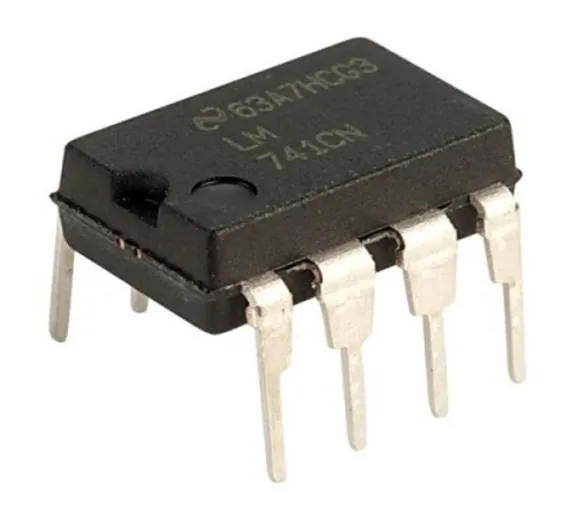
LM741 Operational Amplifier
SKU: SKU: DBS30,LS20,TH5,KRT
The LM741 series are general-purpose operational amplifiers which feature improved performance over industry standards like the LM709. They are direct, plug-in replacements for the 709C, LM201, MC1439, and 748 in most applications. The amplifiers offer many features which make their application nearly foolproof: overload protection on the input and output, no latch-up when the common-mode range is exceeded, as well as freedom from oscillations. The LM741C is identical to the LM741 and LM741A except that the LM741C has their performance ensured over a 0°C to +70°C temperature range, instead of −55°C to +125°C.
Number of Channels (#) 1 Total Supply Voltage (Min) (+5V=5, +/-5V=10) 10 Total Supply Voltage (Max) (+5V=5, +/-5V=10) 44 GBW (Typ) (MHz) 1 Slew Rate (Typ) (V/us) 0.5 Vos (Offset Voltage @ 25C) (Max) (mV) 3 Iq per channel (Typ) (mA) 1.7 Rating Catalog Operating Temperature Range (C) -40 to 85^-55 to 125^0 to 70 Package Group CDIP^PDIP^TO-99^WAFERSALE Output Current (Typ) (mA) 25 Offset Drift (Typ) (uV/C) 15 Vn at 1kHz (Typ) (nV/rtHz) 30 Architecture Bipolar Additional Features N/A IIB (Max) (pA) 80000 CMRR (Typ) (dB) 90 Package Size: mm2:W x L (PKG) See datasheet (PDIP),See datasheet (CDIP)An operational amplifier (often op-amp or opamp) is a DC-coupled high-gain electronic voltage amplifier with a differential input and, usually, a single-ended output.[1] In this configuration, an op-amp produces an output potential (relative to circuit ground) that is typically hundreds of thousands of times larger than the potential difference between its input terminals. Operational amplifiers had their origins in analog computers, where they were used to perform mathematical operations in many linear, non-linear and frequency-dependent circuits. The popularity of the op-amp as a building block in analog circuits is due to its versatility. Due to negative feedback, the characteristics of an op-amp circuit, its gain, input and output impedance, bandwidth etc. are determined by external components and have little dependence on temperature coefficients or manufacturing variations in the op-amp itself. Op-amps are among the most widely used electronic devices today, being used in a vast array of consumer, industrial, and scientific devices. Many standard IC op-amps cost only a few cents in moderate production volume; however, some integrated or hybrid operational amplifiers with special performance specifications may cost over US$100 in small quantities.[2] Op-amps may be packaged as components or used as elements of more complex integrated circuits. The op-amp is one type of differential amplifier. Other types of differential amplifier include the fully differential amplifier (similar to the op-amp, but with two outputs), the instrumentation amplifier (usually built from three op-amps), the isolation amplifier (similar to the instrumentation amplifier, but with tolerance to common-mode voltages that would destroy an ordinary op-amp), and negative-feedback amplifier (usually built from one or more op-amps and a resistive feedback network).


